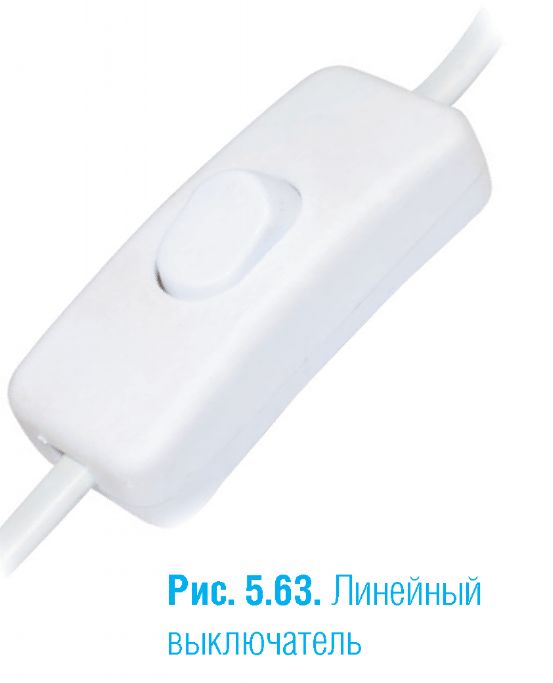Material of sockets. Electrical outlets
Despite the existence of uniform global standards, they are not always widely used in different countries, which should be taken into account, for example, when traveling on a business trip. The same types of outlets that are common in the CIS countries and parts of European countries can not be used to charge the phone or connect a laptop brought from the USA or Japan. In addition, even if you choose an outlet on the domestic market, then for different tasks there are devices with their connectors and functionality.
General details and design differences in different countries
The laws of electrical engineering work everywhere the same - on the ground, under water or on the moon, so the basic device is always the same everywhere, regardless of which outlet is used for the type and purpose. Its main task is to ensure a simple connection and disconnection of the appliance to a stationary electrical network. As a result - the elements and materials will be the same everywhere, and the main difference will be in their form, which is historically applied in different countries.
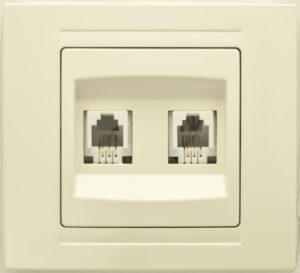
Main types of sockets used in different countries:
- A - the United States and Japan - sockets designed for 110 volts.
- B - Same type A, only with grounding contact.
- C - For operation in 220 V and 50 Hertz networks. Distributed in the CIS countries and a number of European countries.
- D - British female connectors. Almost the same are used in South Africa.
- E - French version of the socket type C, but with a grounding contact.
- F - German version of type C for wiring with earthing
- G - Another standard from Britain.
- H - Standard in Israel.
- I - Devices installed in Australia.
- J - Swiss female connector.
- K - Danish version of the C type outlet for grounding.
- L - Italian simplicity and functionality.
This video details the features of electrical networks and in particular sockets in different countries around the world:
From what parts are the sockets assembled
According to the above devices, it can be seen that all types of household outlets, despite the different designs, have a common structure. The design of the standard socket includes two main connectors for phase and zero, and if the model allows for grounding, there will be three contacts. Accordingly, if the voltage applied to it and the frequency of the current approach the device to be turned on, then it will work if an adapter is available.
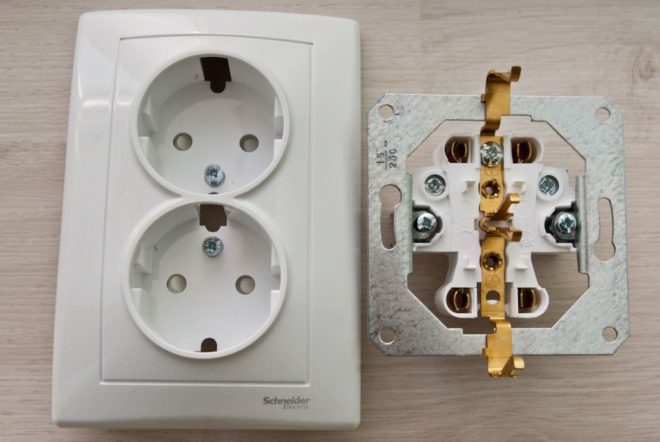
The outlet device, regardless of its type, type and characteristics, includes the following elements:
- The base is made of dielectric - ceramic or plastic. The ceramic base withstands high temperatures, in case of contact overheating, but more fragile. In the base there are landing nests for contacts, the mechanism of fastening and a hole in the thread for screwing the lid.
- Fixing mechanism. In the case of internal sockets, these are spacer legs, while in the outer sockets there are simply holes in the base for screws.
- The main contacts are for phase and zero. The part that clamps the contacts of the plug can be additionally spring-loaded to make the contact more dense. In addition, they have a fastener for the wire.
- The grounding prong is not an obligatory component, but in most devices it is.
- Cover made of plastic - closes the live parts and protects them from dust and water. It can consist of two parts - decorative and fastening.
These are common parts that are in any outlet, but there are also devices on the market with additional functions, in which this list will be wider.
Differences by type of installation
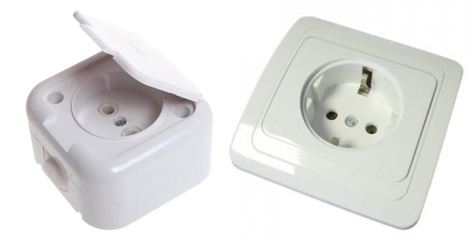
According to this criterion, the types of electrical outlets are divided into two main categories: internal and external.
The first type of device is used most often, despite the certain difficulties associated with their installation - the installation takes place in the wall, for which it must cut out a hole for the outlet itself and a groove for the wire that will fit it. These shortcomings are covered by undoubted advantages in terms of aesthetics and fire safety - you do not have to stumble on the wires, risking them to spoil, and if there is a short circuit, then in the thickness of the wall it's not scary.
External types of outlets are most often used, if necessary, to lay temporary wiring or wooden houses, where the installation of internal wiring is subject to very stringent restrictions and is not practically applied. Also, the outer method often attached power sockets, which are large in size.
Technical characteristics - power and household sockets
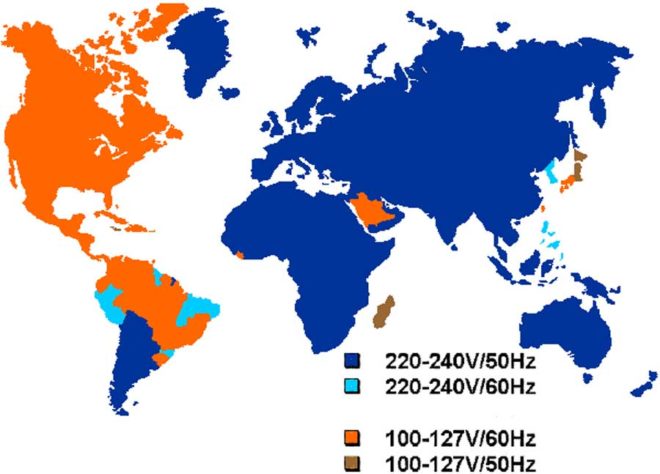
All over the world, only two standard AC frequencies are used - 50 and 60 Hertz. These values are absolutely not important for the sockets themselves - only the amount of current loss depends on them when it is transported over long distances.
The voltage standards are also a little bit - 100, 110, 115, 120, 127, 220, 230 and 240 volts. Given that the permissible deviations are +/- 10%, we can assume that the main standards are two - 127 and 220 volts.
Much more attention should be paid to what are the sockets by the current strength, on which their contacts are calculated - in modern household devices this is 10 and 16 Amperes. If you need to connect the device, designed for a large current, then you need to install a power outlet for it - they are usually designed for 32 Amps. The principal difference in them is in the thickness of the contacts, due to which a large area of their contact is obtained.
Species by designation
If initially the sockets were used exclusively for powering electrical appliances from the power grid, then with the increase in the number of wires in the average house, it became necessary to hide some of them in cable channels and draw conclusions. As a result, new types of outlets have appeared that have become the outputs of antenna wires for TV, cables for Internet connection of computers, radio and fixed telephones. Recently, they even install female terminals to which you can connect speakers from the audio system and a USB cable to charge the phone.
Regardless of what the socket is used for, its main components remain the same - the base, the fastening mechanism, the contacts and the isolating (part-decorative) cover.
Additional functions
When pressing issues are resolved, they begin to engage in comfort - the following types of outlets are a premium device with additional functionality that allows improving the conditions of their operation.
As a result
Regardless of how the rosette is arranged externally, its main components are always the same. Thanks to this, when traveling to other countries, it is often possible to use (or make yourself) an adapter to use the charging of a mobile phone or laptop. The truth before this is to find out which country has adopted a standard for the frequency and voltage of electric current.
The modern market of electrical goods offers a large number of types of sockets and switches for various purposes, performance and quality. For correct and safe work Such electrical equipment must be able to choose a model for each specific case. Not the last place in the choice is the manufacturer of electrical goods and materials used in the manufacture of outlets and switches.
Types of sockets
The standard value of the voltage of the home electrical network is 220 volts. Therefore, the classification of household sockets is mainly given for this voltage class. Most household consumers have the power calculated for this voltage value. When there is a need to connect high-power electrical appliances, industrial outlets are also used in everyday life. These outlets are designed for a three-phase electrical network with a voltage of 380 volts.
Sockets are distinguished by their purpose, design, degree of protection from moisture and from mechanical penetrations.
The socket is a plug-in contact type electrical equipment (plug / socket).
In Russia, the CIS countries, standard models of S-type and F-type sockets are used. These types are called "eurosockets".
Sockets of type "C" - plug connection without connection of the grounding conductor. Rosettes type "F" - the same, but with the connection of the grounding conductor.
In the 220 V network, European sockets are used to connect electrical consumers with a capacity of up to 3.5 kW. The current passing through such sockets does not exceed 16 A in the normal operation of electrical appliances.
When connecting high-power electrical equipment, industrial plug-in models are used, rated at 32 A and 380 V.
According to the frequency of alternating current, the sockets can be designed for a frequency of 50 and 60 Hz. In the CIS and Russia, alternating current with a frequency of 50 Hz.
Another defining feature when choosing sockets is the type of socket installation. There are two types:
- Sockets outdoor installation. This type of outlet provides for installation directly on the surface. Such sockets are made in the case and do not require preliminary equipment of holes in the walls and other places of installation.
- Sockets internal installation. This type of outlet does not have a housing. Installation of the socket of the internal installation provides the equipment of a hole in the wall and installation of a special plastic box into which the socket will be mounted. These sockets look more aesthetically in everyday life, but they have a more time consuming installation process.
According to the degree of protection from moisture, the outlets are waterproof. The international classification of such outlets is IP44 and above. The socket of this version is equipped with a cover protecting the power contacts from moisture penetration. These outlets need to be installed in the bathrooms and outdoors.
There are also sockets of the internal installation with a built-in extension. This type of outlet is very practical, but requires specific installation conditions. Namely, the presence of sufficient space in the cavity of the wall to install the coil with the cable.
A few additional and very useful functions of modern outlets:
- Socket with built-in protective shutdown device. The consumer protects the device from failure because of malfunctions in the power supply network.
- Socket with built-in timer. This version of the sockets allows you to adjust the time of turning on and off the appliance by the appearance and loss of voltage on the power contacts of the socket. Such outlets are not used permanently, but have an adapter in the main power outlet.
Also sockets with timers can be in the form of a separate module-adapter.
- Socket with built-in sensor for power consumption. These outlets are equipped with a special display, which displays the indicator of the power consumed by the appliance in kW. In addition, the socket can be equipped with a diode illumination, which changes color depending on the amount of power.
- A socket equipped with a push-button of the plug. It is designed to facilitate the disconnection of the plug connection.
- A socket equipped with a diode light. Such an outlet is easier to find in the dark.
Types of switches
Light switches for household use in apartments and houses are distinguished by the following criteria:
- Installation method;
- fastening of wires;
- way to control the switch.
By the method of installation, light switches, as well as sockets, are external and internal installation. Such switches are called hidden and external, respectively. Hidden are installed in the wall with concealed wiring, and outdoor ones are used for networks with open wiring. Sometimes outdoor switches are used to facilitate the process and installation time. External switches are easier to maintain and repair. Hidden, in turn, have a more attractive aesthetic appearance, better fit in the interior of the premises.
By the method of fixing the wires to the power terminals, the switches are divided into devices with a screw clamp of the conductor and a device with a quick-clamping mechanism for fixing the wire.
Bared aluminum wire quickly oxidizes, so the contact area must be tightly pressed by the washer of the screw connection. The copper conductor is softer and less prone to oxidation.
By way of switching on and off, the switches are divided into the following types:
- Rocker switches.
The principle of operation of such a switch is based on the inclusion of contacts by mechanical means by means of one or more flip-flops. Depending on the number of keys, the switch can control one or more lamps or even groups of fixtures. This method of inclusion is the most common and most frequently used. The price of such switches is minimal, in comparison with the models of another version.
- Pushbutton switch.
Such switches make power on and off by pressing the same button. There are switches with several buttons. Are popular among the offers on the market.
- Dimmers.
Dimmers are light switches equipped with a light intensity control device. Such a device can be made with a wheel, buttons or even a touch panel.
An example of the most modern execution. Dimmer with touch panel.
The range of light intensity can be adjusted from 0 to 100%. Such switches are popular, but they are more expensive than standard models. Modern dimmer design makes them in demand when decorating interiors of different subjects. By reducing the illumination, you can save energy significantly.
- Rotary switches.
Rotary switches are available in a variety of designs.
Such switches do not have any additional functions. Turn on and off the lighting by turning the control knob. Very popular in retro style interiors. Used mainly for outdoor wiring, but there are also hidden installation models. Easy to maintain, install and repair.
- Rotary switches.
This type of inclusion is used exclusively for design purposes. He does not add any functional practicality. Efficiency of work also does not change. Often, switches of this type of control are equipped with sconces and lamps.
- Sensor switch.
Such switches are the most modern. They are equipped with a special touch-panel, which is used to control the lighting. Touch switches have a very wide variety of models with various additional functions (timer, backlight, motion sensors, room temperature and more). In the market of light switches, the models of sensor switches are the most expensive category of switches. But despite the cost, they are also among the most popular. Mainly due to its design, functionality and a great resource of working time.
- Acoustic switch.
The principle of operation of such a switch is based on controlling the supply of electricity by including a sound sensor in the circuit. This sensor responds to certain sound signals, often claps. The undoubted advantage of such switches is that they do not need to be searched in the dark. Some cheap models may be of poor quality and do not work the first time.
- A separate category can be referred to the management of the lighting of the room with the help of a remote control panel. Such consoles are used in modern smart control systems for household electrical appliances. With its multifunctionality, remote control has some unpleasant moments. For example, the loss or breakdown of the console. It is not always good, when the management of all processes is concentrated in one device. To avoid unpleasant situations, remote control is done as an additional to the basic.
Switches, as well as sockets, fall under the international classification system of electrical equipment IP. The system regulates the execution of switches in various degrees of protection from moisture and the entry of solid particles on current-carrying parts. The designation of such switches begins with IP44 and higher.
Waterproof switches must be installed in rooms with high humidity: bathrooms, baths, saunas, and also in the open air.
How to choose an outlet in an apartment
From the correct choice of sockets in many ways depends on its effective and safe operation.
Choose the outlet you need by the following criteria:

To facilitate selection, comparative characteristics several of the most popular manufacturers (top-5).
Information is provided as a fact-finding and is not an advertisement.
- Schneider Electric.The products of this manufacturer are known for their unquestionable quality and extensive assortment. It is noteworthy that the company occupies a leading position not only in the production of household electric equipment, but also in the sector of industrial equipment. The products of this company are used by professional assemblers, but it is suitable for beginners, because it has a simple but effective design. And also the products of this manufacturer are manufactured with different degree of IP protection.
- Kuntsevo-Electro.An example of qualitative electrotechnical equipment from the domestic manufacturer. The products of this company are relatively inexpensive with a decent quality of used materials and quality of assembly of products. Sockets are also implemented in various configurations according to the IP standard. The company's products are laureate of the "100 best goods of Russia" award.
- TDM is an electrician.The production facilities of this company are also located on the territory of Russia. The company is distinguished by the exceptional quality of its products. It has in its arsenal a lot of modern developments of both sockets and other electrical equipment. The products comply with IP standards, ISO9000. Sockets of this manufacturer are easy to install, maintain and repair. They have a standard set of modifications and are most widely represented on the market.
- ABB. The products of the German manufacturer ABB (formerly Siemens) are also an example of the quality of assembly and materials of products. The outlets of this company are distinguished by reliable fastenings, standard, but modern design. Their price category is slightly higher than previous manufacturers, but the life of ABB products is one of the highest among electrical products.
- Legrand.This manufacturer offers electrical products of high quality and modern design. The company even produces many collections of electrical accessories for various interiors. At the same time, the requirements of IP standards and ISO9000 in products of any design are observed. The price category of such goods is also higher than the average for the market. Despite the cost, the sockets of this manufacturer deserve an honorable place in any rating.
What to look for when buying a switch
The choice of the switch for installation in any room should be made according to certain criteria. Only then the work on its installation and operation will be carried out correctly and safely.
Criteria for choosing a switch:
- By the method of installation. Selection of a switch for external or internal wiring. Sometimes use outdoor switches for concealed wiring to speed up the installation process or for installation in specific conditions (for example, high humidity or outdoors).
- By the number of keys, buttons. Depends on the number of controlled consumers - one light source or group.
- According to local conditions of work. The choice depends on the installation site, its features according to the requirements of the IP standard.
- For additional functions. The choice is determined by the presence of a backlight switch, sound sensors, touch controls and other. This choice largely depends on the interior of the room.
To facilitate the process of choosing a switch for companies, manufacturers of electrical products are listed several of the most popular companies.
- TDM is an electrician.As in the case of sockets, the switches of this manufacturer have a wide assortment for their performance and additional functions. Modern design and unconditional build quality make the company's products the leader among domestic manufacturers in this industry.
- Rexant. Manufacturer of electrical products from China. Despite the generally accepted opinion about the low quality of products from this country, this manufacturer is distinguished by the quality assembly of its products. Switches comply with the standards of the European class of electrical equipment, are reliable in operation, have a sufficiently serious working life and many functional additions. The price of these switches is relatively low. They can be used in interiors of different directions.
- Berker. German manufacturer of circuit breakers and other electrical products. A remarkable type of switches of this manufacturer are dimmers (switches with dimmers of intensity of illumination). Modern execution, thoughtful functional design and high quality of products are the distinguishing features of the switches from this company.
- Arlight. The company specializing not only in the production of household light switches, but on various modern developments. The main direction of this company is LED lighting of rooms and interior lighting of any complexity. Qualitatively made switches, calculated for certain voltage values of the network, are perfectly suitable for both professional installation, and for the independent.
- Legrand.Switches of this company (like sockets and other equipment) comply with the requirements of European quality standards and protection systems. Qualitative certified materials are used in the assembly of products. The switches themselves are performed in modern design and design. Equipped with many functional additions: illumination, motion sensors and others.
Features of the selection of sockets and switches in the bathroom
The bathroom is a room with high humidity and the possibility of direct hit on the electrical appliances of a jet of water. The choice of switches and sockets in such rooms must necessarily be made taking into account their protected performance according to the IP standard.
Sockets and switches in this case must have a marking not lower than IP44.
Example of the appearance of a waterproof switch:
Example of the appearance of a waterproof outlet.
For a wooden house (log house) suitable outdoor sockets. These sockets are suitable for outdoor wiring (in wooden houses, the wiring is external to fire safety considerations). Sockets and switches in this case, it is necessary to install on the flasks of non-flammable material. All of the same considerations of fire safety. Podrozetniki can be made, for example, from textolite.
How to distinguish high-quality devices from substandard
First of all, you should pay attention to the quality of the assembly of the product. The contact connections must be made qualitatively and look safe. Cases of sockets and switches should not be deformed, without chips and cracks. The color of the shells should be uniform, without any traces of heating and darkening. Fixing elements must be included.
All products must be accompanied by a quality certificate and a corresponding IP security marking.
Many products are marked IP directly on the body.
Do not try to choose the cheapest version of the product. The quality of an electrical product largely depends on the safety of people in the immediate vicinity of the appliance.
The market of electrical goods is filled with a variety of offers of electrical products. Switches and sockets are one of the most popular products of this category. In order not to get confused and make the right decision when choosing them, you must always follow the above recommendations and objectively evaluate the functional features of the desired product.
An electrical outlet is a complex electrical device for the safe connection of consumers to central network. Socket Mechanism ensures reliable contact closure for uninterrupted current transmission through the circuit. Large selection of devices different types is presented on our website.
Which outlet to choose
We have just a huge assortment of products, diverse in design and technical characteristics. To buy electrical outlets suitable for specific operating conditions, in addition to color and shape, it is worth paying attention to the method of installation. There are two possible options:
- Overhead outlets. Designed for installation in outdoor wiring. The device is fixed to the wall with screws or screws. Sockets for cable channels protrude above the wall surface and require a bit of free space to connect the plug. The main advantage is easy installation and the ability to quickly transfer to a new location. For organizations, we always recommend buying these wholesale outlets to install in all offices.
- Internal sockets. The electrical component of the structure is hidden in the wall, only the decorative cover is mounted on the surface. The device is optimal for performing concealed wiring, when the rod under the rosette is prepared in advance. The product is mounted a little more complicated than the overhead models, but does not have protruding parts.
When choosing an outlet, you need to pay attention to the following characteristics:
- moisture protection. For use in rooms with high humidity select special sockets Legrand with a hinged lid. They can be installed in the bathroom, in the pool, in the kitchen, etc.;
- permissible current value (indicated on the reverse side). For example, a 16 amp outlet you can connect consumers, the total power consumption of which does not exceed this number. Otherwise, it is possible to melt and even to ignite;
- number of places. The range is single sockets , double, triple and quadruple. Here the choice depends entirely on your needs;
- type plug. When choosing, be sure to pay attention to the plug of the appliance, for which you buy the outlet. The domestic equipment has a diameter of 4 mm pins, and the distance between them is small. European household appliances are made with another fork. There the diameter of the pins is 4.8 mm, and the distance between them is larger. The price of the outlet does not depend on this, but there is a risk that you simply can not connect the equipment because of improper location of contacts.
If the house has a small child, we recommend that you choose sockets with lid . Such sockets with protection from children will help protect a curious child from accidental electric injury. For all other questions, you can consult our managers. All products presented on the site are made in hulls made of impact-resistant plastic and comply with all electrical safety standards. It is a good opportunity to buy high-quality sockets in Moscow at reasonable prices.
The main task of the outlet is to create a reliable electrical contact with the mains plug of the device after switching on, and the outlet must be absolutely safe for the person
Electricity is used literally everywhere. That's why you need reliable devices that provide access to it. In the household, electrical outlets are used to access the power grid. They can work regularly for many years, but sometimes they become unusable.
Electrical outlets They are used to connect electrical appliances and electric machines to the electrical network. The main task of the socket is to create a reliable electrical contact with the mains plug of the device after switching on. In addition, the sockets should be completely safe for humans, and their design should completely prevent unintentional contact with wires and parts that are or may be under voltage.
The requirements to the safety and appearance of the outlets have grown substantially. Specific conditions dictate the color and shape of the parts protruding above the wall, more and more often the sockets must be assembled into the module (it can include connectors for telephone line, television cable and computer network).
Arrangement of electrical outlets
When designing sockets, the so-called modular method is used. In this case, the mechanism of the device is designed as a separate unit (a functional module), which can be installed in any type of devices. In this case, the decorative module (patch) can be changed, following the fashion, tastes or interior of the room. At the same time the mechanism of replacement does not require. This is all the more convenient because it is the mechanism that is attached to the supporting surface (for example, to the wall).
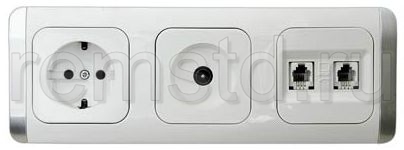
The base of the functional module and the decorative details of the sockets are made of special plastics. They are good dielectrics, have high strength at normal and elevated temperatures, do not support combustion, do not change color and are not destroyed under the influence of electromagnetic fields and ultraviolet light. In the EU countries, for example, high-strength ABS plastic and polycarbonate are used for this purpose. But porcelain in these countries for the production of outlets and other similar devices is prohibited, as not the most reliable of dielectrics.

So, any electrical appliance having a connecting cord with a mains plug can be connected to a power source. It is enough to insert this plug into an electrical outlet of the appropriate design. However, this connection can be considered correct only if the contacts formed by the plug and the socket do not heat up and spark when the current flows. This can be ensured if the socket electrodes reliably contact the fork pins, tightly fit them, providing a large contact area. Each such electrode is made in the form of a spring receiving receptacle. Its initial diameter is slightly smaller than the diameter of the fork pin, so when it is plugged into the socket, we must exert some effort to overcome the elasticity of these sockets.
The design of the socket receptacles and the material from which they are made must provide a sufficiently large number of repetitions of the "turn on / off" cycle without degrading the quality of the contacts. Rosettes from the company, which are considered leaders in their industry, allow at least 5000 such cycles, which is equivalent to a period of operation for 6-10 years (provided that the outlet will be used 1 to 2 times a day).
The socket receptacles of the socket are connected to its terminals, to which the wires of the electrical wiring are connected. At what in modern devices this connection is carried out not as a separate detail, but as a branch of a monolithic plate from which the receiving socket is made. Thus, it is possible to avoid undesirable from the point of view of reliability of additional connections in the path of electric current flow.
Of great importance for the reliability of the outlet is the quality of the mechanical connection of the supply wires to its terminals and the reliability of the electrical contact in this connection. In other words, the terminals must firmly hold the wires and ensure reliable contact with the live parts of the outlet. The most famous and, perhaps, still the most reliable for power wiring and sockets are screw terminals. In them, the wires are pressed against live parts using screws. Their main advantage is that the force with which the wires are clamped in the terminal can be very significant, and this ensures both good wire retention and reliable electrical contact. However, to prevent loosening of the clamp due to vibration or heating, the screws in the terminals are desirable to be used together with spring washers, which prevent spontaneous unscrewing of the fasteners.

Spring terminals are often used in the design of household electrical outlets. Their advantage lies in the fact that they greatly facilitate the connection of wires. To do this, simply bend the bare end of the wire with some effort into a special hole on the socket housing. The spring-loaded "knife" inside the terminal locks the wire and presses it against the live parts of the socket. But the power of this "clamping" is difficult to control, and if for some reason it weakens, the unreliable contact of the wire with the socket will remain unnoticed at the stage of installation and lead to premature failure of the outlet.
The installation conditions of the outlets are often forced to connect to each terminal not one but two wires. With this in mind, both in the screw and spring terminals are provided with two seats or holes for the wires. But when pairing up the wires, you need to make sure that their diameters are the same, or differ very little. Otherwise, a wire with a smaller diameter will be poorly fixed. For example, it is practically impossible to clamp a 1.5 mm² wire with a single screw if a 2.5 mm² wire is connected to it at the same time.
As you know, to connect household electric appliances you need two single-core wires or one two-wire. Therefore, each socket has at least two insulated terminals and receptacles, and if the wiring is made with a three-wire cable, in which the third conductor is ground, then it is advisable to install sockets with additional earth electrodes (so-called "grounded sockets") on such electrical wiring. For safety requirements, these electrodes are located in the socket design so that when the plug having similar electrodes is turned on, the grounding electrodes on the plug and socket come into contact earlier than the fork pins come into contact with the receptacles of the socket. Therefore, the grounding electrodes are always clearly visible on the outlet. This is either two metal plates on the sides, or one metal pin, very similar to the pin of the power plug. The grounding electrodes are connected to its terminal, to which the grounding wire of the electrical wiring is connected.
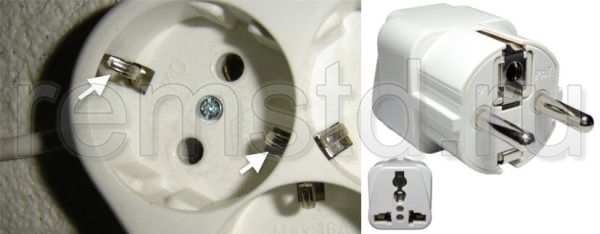
The most important technical characteristics of electrical outlets are the permissible electric current and operating voltage. As a rule, in internal wiring of residential and office premises, sockets designed for 10 or 16 amperes and operating voltage up to 250 V are used. In order for current carrying details of the outlets to be able to pass such a current with minimal heat release (in other words, not warming up), for them production of special metal alloys with a relatively large content of copper (10-60%.). The electrical conductivity of such alloys is quite high and allows us to fulfill this condition without significantly increasing the dimensions of live parts and the sockets themselves. At the same time, these alloys are harder than pure copper and have the elasticity necessary for the proper functioning of the receptacle sockets.
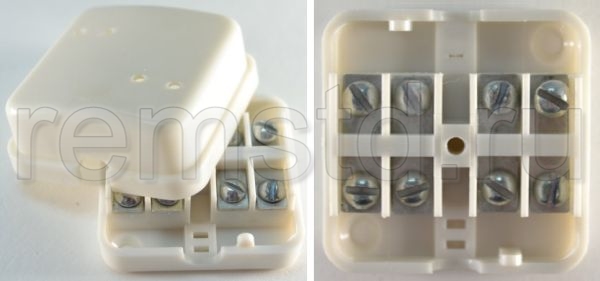
Obviously, the above-mentioned permissible outlets for the outlets correspond to the range of values consumed electrical power, in which the vast majority of household appliances operate. And only for kitchen electric stoves will require special, more powerful sockets (connectors). But even more often they are connected at all without sockets - through terminal boxes.

Types of electrical outlets
Electrical outlets are overhead, built-in and portable. Concerning the latter, it will suffice to say that they are designed as a portable device with a dielectric casing that protects it well from the influence of the external environment. Such cases are used on all sorts of electrical extensions. Typically, the other end of the extension cord is fitted with a power plug.
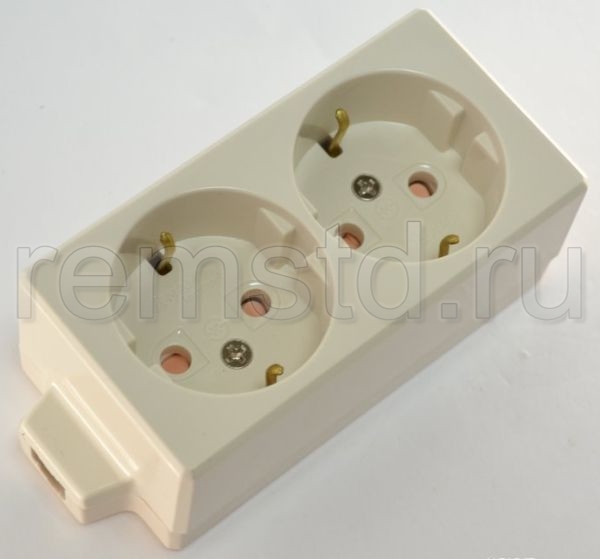
Overhead outlets mounted on open electrical wiring, when the wires are laid on the surface of walls, ceilings and other building structures. These sockets are attached to the wall in the right place with the help of screws or screws, passed through the fixing holes in the bottom of the socket housing or in a monolithic base. The wires are connected to the terminals through an opening in the side wall of the housing.
Although the method of attachment used in overhead outlets is simple enough, it ensures reliable fixation of the sockets on the supporting surface. More often some difficulties with fastening arise when installing the built-in sockets. There are two reasons for this. Firstly, their installation and fixation mechanism is really more complicated than for invoices. Secondly, built-in sockets are used for the device of concealed wiring, which is used almost everywhere. To the built-in sockets and to the quality of their installation, higher demands are made.
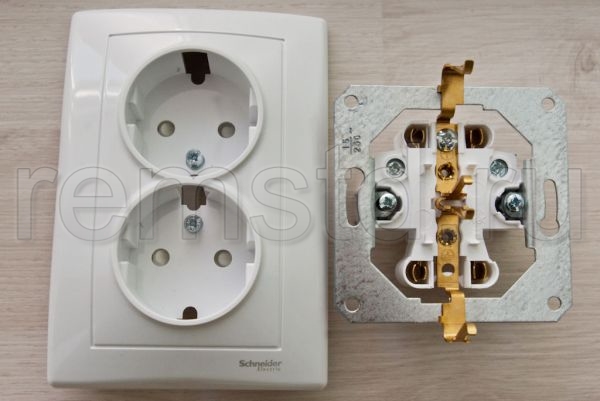
It is installed so that its functional module (mechanism) completely hides in the wall. On the surface there are only decorative lining. This socket is fixed in the wall with the help of spacer feet and screws, which are passed through the holes in the mounting plate. Many people know the situation when, when you turn off the power plug, the outlet falls out of the wall and hangs on the wires. This trouble most often occurs with built-in outlets that are ineptly fixed with the help of just the feet.
Always unpleasant when something does not go well. And it is doubly insulting when simple and seemingly more than reliable things are brought, for example, rosettes. In fact, everything has its own resource of trouble-free operation, and electrical outlets too. Under the influence of electromagnetic fields are subjected to slow destruction and plastic parts lose their strength, electrical contacts deteriorate with time. In the process of prolonged use, the screw connections are weakened, the rosettes are loosened and even fall out of the wall. In the end, they just become unusable, and we exclude them from the number of useful things. These sockets must be replaced.
But often the cause of the failure of the outlets are errors in their installation or improper operation. In this case, you can try to repair them. Let's consider some typical situations. If, after connecting electrical appliances, especially powerful ones, the outlet spreads a sharp smell of burnt plastic, it means that somewhere in the socket there is a bad electrical contact, on which too much heat is released. After taking out the plug from the outlet and waiting for 30 seconds, touch the plugs of the power plug. If they are hot, then this indicates that, most likely, the receptacles of the socket, which are not loosely adjacent to the fork pins, have lost their elasticity. This is indicated by darkened from the high temperature edge of the holes for the plug in the front panel of the outlet.
If the pins are only slightly warm or completely cold, then contact breakage should be sought in the place of connection to the outlet of the supply wires. It is possible that one or both of the terminals do not press the wires to the live parts of the outlet well enough. In new sockets (or those that are used for less than a year), the clamping screws on these terminals are simply not suitable for installation.
The socket can overheat and even ignite, if through it energize a too powerful electrical appliance or several electrical appliances, the total power of which creates a current that exceeds the permissible current of the outlet. By the way, the value of the permissible current and the operating voltage, as a rule, are indicated on the front panel of the socket. For example, there you can read: 10 A, 250 V. This means that it is possible to include electrical appliances with a total power of not more than 2.2 kW into the socket. In a socket designed for a current of 16 A, you can turn on electrical appliances with a power of up to 3.5 kW. The outlet, which is heated, you can try to repair.
Without fail, disconnect all electrical wiring of the apartment or the part of it in which the outlet to be repaired is installed from the power supply. Note that repair it makes sense only if the reason for the heating was the screw terminal. All other problems are not fixed by themselves. Receiving pockets that have lost elasticity, weak spring terminals - all these are sufficient grounds for replacing the entire outlet (or its functional module). Thus, disassemble the outlet for repair is only meaningful when everything indicates a poor contact of the wires with the sockets of the outlet.
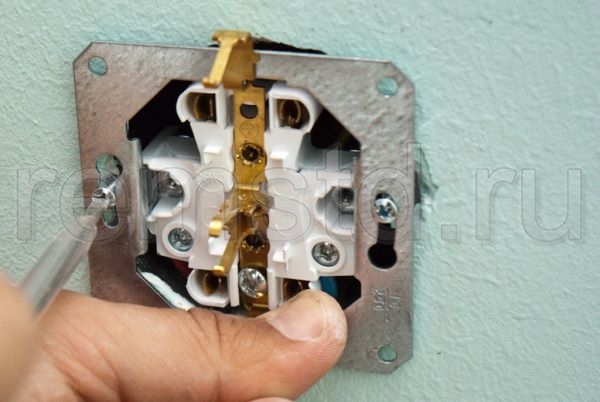
If this is the case, unscrew the screw holding the front panel of the socket with a suitable screwdriver and remove it. Together with it, the decorative frame is easily removed. Under them is the outlet mechanism. If it uses screw terminals, then on its lower or upper edge will be noticeable two identical spikes located symmetrically on the sides of the vertical axis of the socket, possibly leading to them wires. Screw to the point of failure (but still do not cut off the thread), both screws. Replace the frame and the front bezel. Everything, the repair is over. Otherwise, if you open the outlet mechanism, you will find that the terminals are spring-loaded. In this case, replace the entire outlet. How to do this will be described below.
In obsolete models of sockets with a porcelain base screw terminals are located on the bottom and are not visible from the front of the outlet. To tighten the screws of these terminals, it is necessary to remove the socket from the installation box. Better yet, just buy and install a new outlet.
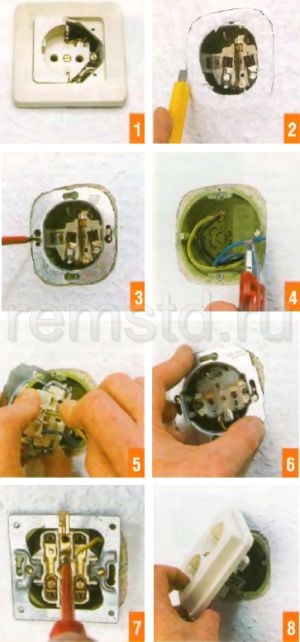
Repair of the built-in socket
1. Built-in socket with cut halves and front panel. In the middle, you can see the screw securing the panel to the socket mechanism
2. Remove the decorative pads and, if necessary, cut off the wallpaper with a sharp knife, hiding the mounting frame
3. To remove the mechanism from the installation box, it is necessary to unscrew the screws securing the mounting frame
4. Before connecting the outlet, be sure to check the lead wires for broken wires
5. After checking, remove the chip from the spring terminal and insert into it the bare end of the whole wire
6. Screw the screws into the edge of the box, pass their heads through the slots in the mounting frame. Turn the mechanism clockwise
7. If the terminals are screwed, then the bare end of the entire wire is clamped with the terminal screw
8. A double socket can be installed in one installation box, which is repaired in the same way.
Quite often the socket just does not work. That is, connecting electrical appliances to it does not mean connecting to a power source. And if you turn on the power plug in such a socket there is no sparking, then the cause is one - somewhere there was a break in the phase or zero (less often both) lead wires. Check which one is easy. It is enough to touch the phase indicator (phase detector, voltage indicator) to one, and then to another electrode of the socket. If, at one of the touches, the indicator light is on, you should look for a zero wire break. And if not - then phase or both.

It is possible that the wire is broken or damaged during installation of the outlet. Then the breakage place can be found in the installation box. After disconnecting the power supply of the apartment or the corresponding piece of electrical wiring, remove the outlet from the box (as will be clear from the discussion below) and check the lead wires. If visually they seem whole, touch them, try to bend gently (hidden under the insulation, the wire is invisible to the eye, but it can be detected by touch), finally check if they stay in the terminal well. Having found out a bummer, cut off the broken off end, clean the remained whole wire and pinch in the terminal. To remove the debris from the spring terminal, you must press the button above it.
Spark when the appliance plugs into the socket means that the receptacles of the receptacle have completely lost their elasticity. This outlet requires replacement.
It is dangerous when the built-in socket falls out of the wall and hangs on the wires. Current-carrying parts of the sockets and exposed wires near the terminals are accessible for accidental contact and may cause damage electric shock. If the socket itself is not damaged in this case, then it is easy to install it and strengthen it.
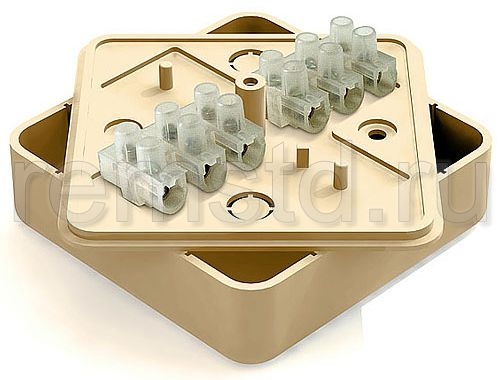
All built-in control and switching devices of modular design, including electrical outlets, have the same type of attachment points. These are the mounting slots on the four sides of the mounting frame and the spacer tabs on the sides of the function module that are diverted from the monolithic base of the module when the corresponding screws are screwed.
For (including rosettes) in the wall, a hollow cylindrical drill ("crown") is drilled with a perforator or drill in it, in which a mounting box is fixed in one way or another (most often with alabaster). It can have different shapes, but it should allow the functional module of the device to be completely immersed in it and strengthen it there with spacer paws. In addition, at the top edge of the box must have holes, designed to fix the mechanism of the socket (self-tapping screws through the slots in its mounting frame).

After disconnecting the power supply to the apartment or the corresponding part of the wiring harness, the front panel and the decorative frame should be removed from the protruding socket (the retaining screw is usually well visible in the center of the panel), release the screws of the spacer legs, press the tabs to the base of the socket mechanism and insert it into the installation box. In this case, the slots in the mounting frame must be above the holes for the screws in the edge of the box. Screw in the screws can be done after installing the socket in the box or before - slots in the mounting frame in one of the positions pass the screws with the cap. When the function module of the socket is correctly oriented (the sides of the mounting frame are located strictly horizontally or vertically) and fixed to the box with self-tapping screws, fix it with the spacer tabs also by tightening their screws.
Naturally, the rosette returned to its place in the wall should be closed with a decorative frame and a front panel that were previously removed.
Sockets are not the most complex commutating devices of those used in electrical engineering. However, the multiple connections to them of electrical appliances significantly affect their performance. Given that one of the consequences of socket failure can be abundant heat generation and even fire, it makes sense to carefully monitor the status of outlets, repair them in time or replace old outlets with new ones.
Tip: not having the necessary skills and qualifications, do not start work with wiring - it's dangerous! Handle this work to a qualified technician.
These products are electrical installation and are an essential element of any home electrical network. In addition to classic power outlets and light switches, many new versions of these devices have appeared recently, which differ markedly from the old ones (Figure 5.35). However, the essence remains the same. Sockets (sockets)The full name is the socket outlet. Everyone knows what it is. There is no house in which they are not. It is through the sockets that electrical appliances are connected, without which modern life is inconceivable. The socket is part of the plug connection, which also includes a plug (Figure 5.36). These components are called "mother" and "father." There are so many types of rosettes that it is very difficult for an uninitiated person to understand exactly what he needs. In appearance all the outlets are similar. To determine the choice, you need to know some technical details. Any outlet consists of the following main elements: Contacts; The base, which is called the shoe; Protective housing. Contact is the main working element of the outlet. It is through it that energy is transferred from the power cable to the contacts of the connected device. The contact material is a metal alloy having a certain elasticity for reliable connection of the plug pins to the socket. On the one hand, the contacts have screw or key clamps for connection to the power conductor, on the other hand they interact with the plug. Of great importance is technical specifications contacts, that is, to what voltage and current they are calculated. The sockets of the old sample are rated for a nominal voltage of 220-230 V and a current strength of 6.3-10 A. These values are much smaller than modern ones, in which the admissible current strength is 10-16 A. |
From these indicators depends the total power of electrical appliances, which can be connected to a separate outlet (Fig. 5.37). Compare the old sample - 1386 W (1386 W = 6.3 A × 220 V) and modern - 3520 W (3520 W = 16 Ah 220 V).
It turns out that the current sockets are almost three times higher than the old ones. This is due to the increase in the power of household electrical appliances. If the apartment has old connectors, then you should think about whether it is worth connecting to them washing machine or air conditioning. The contact material can not withstand.
This is not the only problem with old outlets. The distance between the output contacts is also different, in modern times it is longer. In addition, the diameter
the fork pin also differs: instead of 4 mm it became 4.8 mm. Keep in mind that not every old outlet can connect a modern electrical appliance without the help of a hammer (Figure 5.38). Now in the sockets set three wires: phase, zero and grounding. In old samples, they are only two phases and zero, while on new devices special earthing conductors are installed (Figure 5.39). It is clear that at Fig. 5.38. Socket to the old old socket outlet this protection will not work, and this is absolutely unacceptable from the security point of view. The point here is not only in the design of the sockets, but also in the power supply network, which may have a grounding system, or may not have. This often happens in houses of old construction.
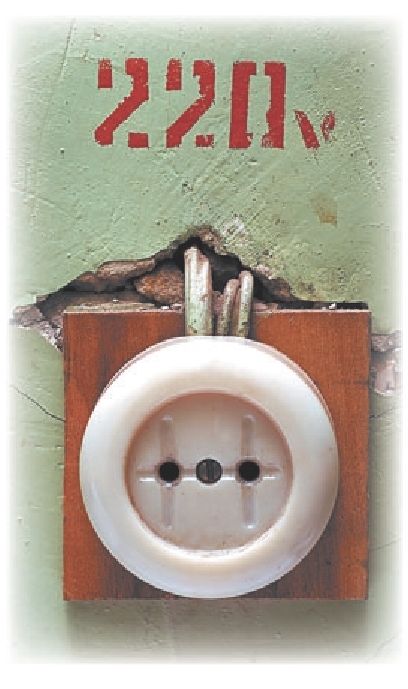
If the socket is built-in, on the shoe there are fasteners for its installation in the junction box.
Protective housing is the outer cover of the connector with holes for the plug (Fig. 5.41).
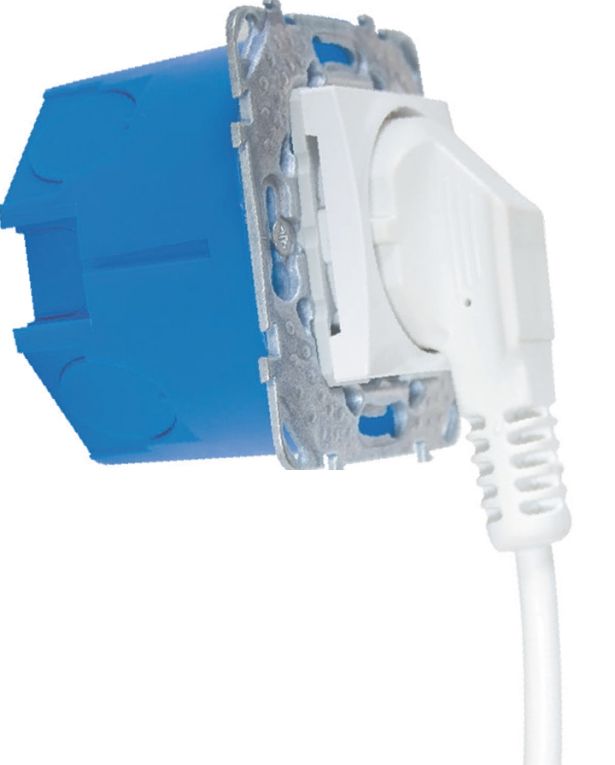 |
Fig. 5.41. Built-in socketin the jar |
It performs protective and decorative functions.
In certain types, special devices are installed in the cover, such as protective curtains, covers, push buttons for the plug, lighting, etc. Make covers of heat-resistant unbreakable plastic with various inserts that adorn the sockets and can be replaced if they do not fit the new wallpaper or layout elements.
Although there are many hundreds and even thousands of outlets, they are divided into several basic types.
Built-in socket so called, because its shoe together with contacts is immersed in the wall and the protective shell almost does not protrude from the plane of the wall (Fig. 5.42). Mounted such an outlet with hidden wiring in the installation boxes (podrozetniki).
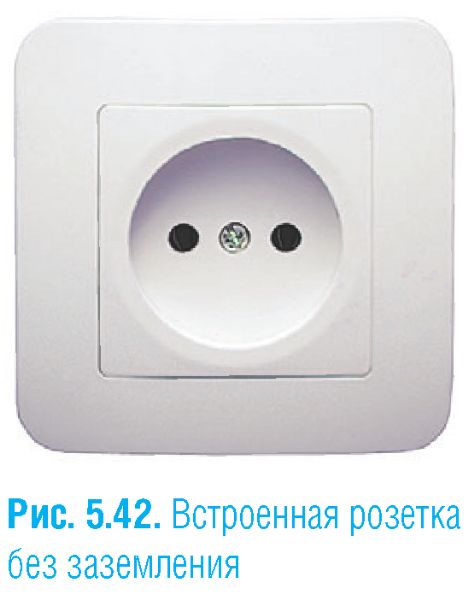
When installing delivery notedo not need to make a hole in the wall. It simply attaches to the surface. The protective casing surrounds the connector from all sides, leaving no contacts open, as is the case with hidden sockets.
Have sockets with earthing there are contacts connected to the ground wire (Fig. 5.43). Designed for installation in electricity of the net, which have a ground connection.
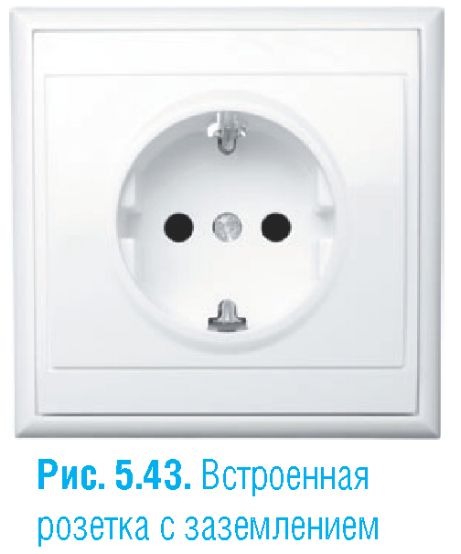
Double sockets are used to connect two plugs at once.
At the base have one shoe of standard size, so
built-in option double socket suitable for installation in a single junction box. If you need to connect a socket with more than 2 sockets in one place, place patch pads (open wiring) or mount several single-socket outlets next to them and apply a frame ( concealed wiring) (Figure 5.44).
Sockets with additional functions can be of any type, the main difference is that additional gadgets are installed in the case or shoe. The most common devices: illumination, protective curtains for children, moisture-proof covers, fork ejector and a sleep timer (Fig. 5.45-5.47).
Sockets can be of a variety of types. For example, a double built-in socket with ground or single-nest outdoor without earth (labeled as b / z). There is a kind of outlet, such as an entrance. This means that it is not finite in the electrical circuit. Power cable, feeding this outlet, goes on to the next. They are mounted when the wires are unattended.
In addition to power, there are also sockets for the tips of information cables. Antenna socket differs from the usual power input appearance. Instead of the usual two holes under the fork pins, it has a connector under the end of the antenna cable (Figure 5.48). Such outlets are installed in the places where TV sets stand or are transferred from place to place. |
NOTE
Never remove the plug from the outlet by pulling the cord. At the slightest skew of the fork pins, it will get stuck in the sockets. After pulling the wire, you can simply pull the outlet from the wall and create a threat of short circuit.
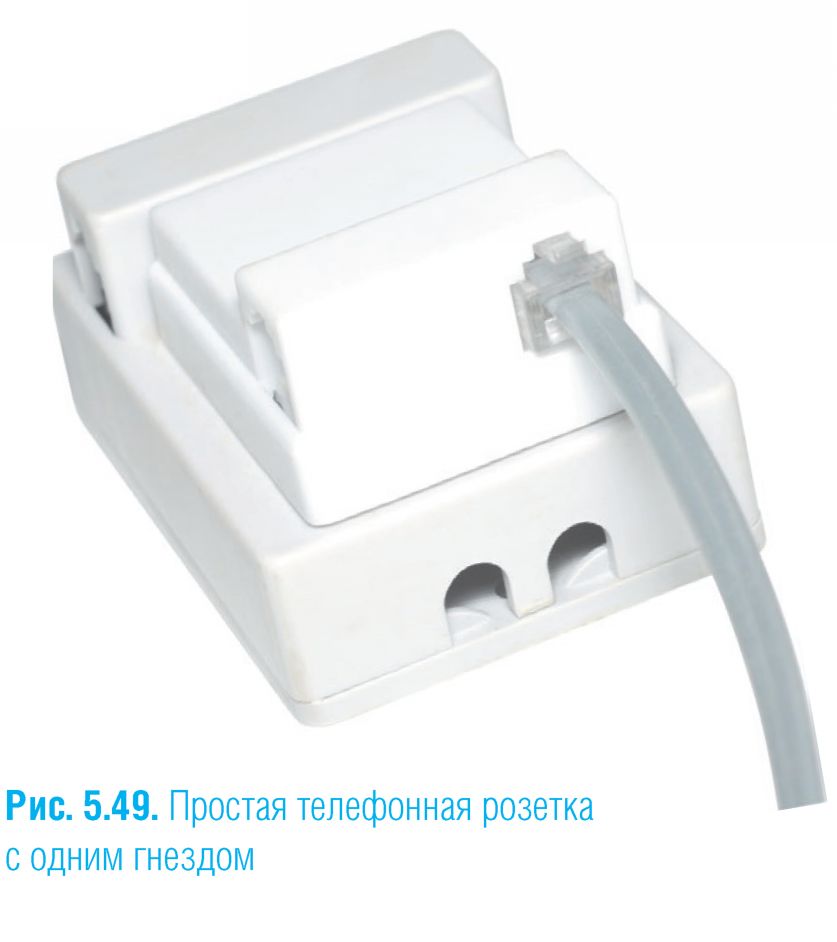
Computer socket in appearance it is very similar to telephone (Figure 5.50).
It differs in size of the cable lug and the number of contact wires. Used to connect to the Internet and connect computers to each other.
Among the many types of various outlets, there are those that combine antenna, telephone and computer connectors in one housing (Figure 5.51).
Telephone socket was created under the phone connector. There are several types: from the simplest ones, installed next to the telephone set, to complex ones, having the form and size of the power outlet (Fig. 5.49).
In different countries, the plugs can be very different from each other. For example, a hair dryer bought in Russia can not be connected to a French outlet. If you need to connect non-matching connectors, special adapters are used (Figure 5.52). By the way, the so-called Euroset is the German standard.
The shoe is a kind of blank for self-made extensions (Figure 5.53).

It can be used as an ordinary power outlet open installation. When making the extension cord, a cord (usually a PVA) of the required length is attached to the shoe and the plug is attached to its end - the extension cord is ready.
In addition to ordinary households, there are portable extenders, which are used for various construction works or outside the home, for example in the garden (Figure 5.54).
Power connectors are plug-in connections intended for connection to single-phase and three-phase networks of various electrical appliances (Figure 5.55). 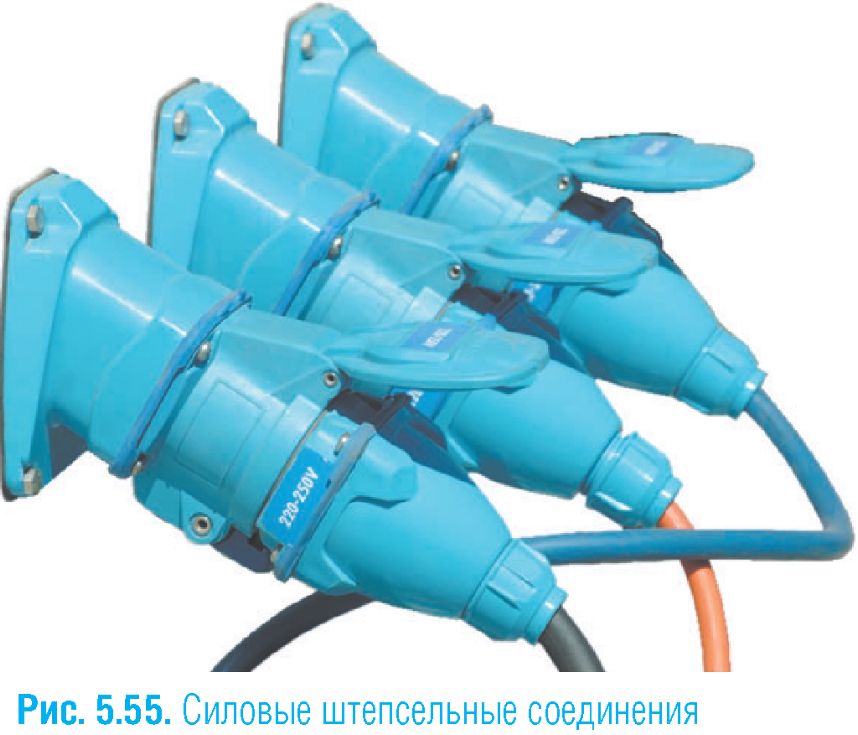
In everyday life they are used quite rarely. With the power connector can be connected to an electric stove, welding machine or a concrete mixer (Figure 5.56).
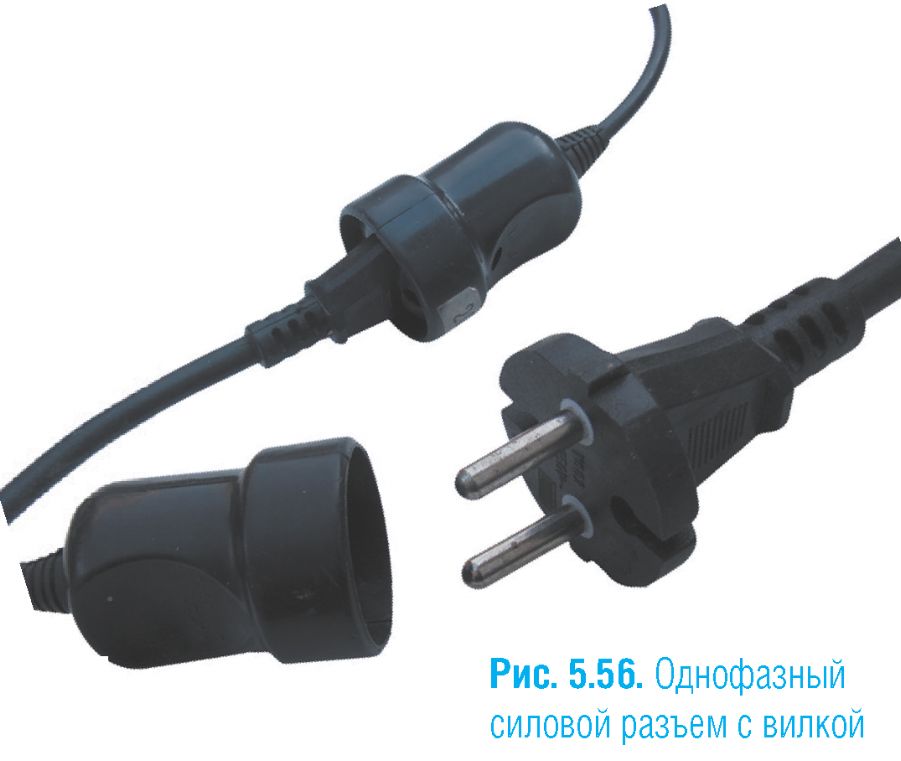
Switches
There are a lot of types of switches. Numerous firms-manufacturers vying with each other offer the richest assortment of products for every taste. In the same way as the sockets, the switches consist of three main parts: contacts, pads and a protective cover. They are made of the same materials as the sockets (Figure 5.57).
The difference is as follows. If the sockets are used to connect to the mains, the switches operate in reverse. They tear electrical circuit. There are no moving elements in the outlet. In the switch, the entire operation principle is built on a changeover contact, which, by changing its position, opens or closes the circuit. To the switch, in contrast to the outlet, only one wire is suitable - phase. In some types there is a contact for connecting the ground wire.
In the same way as the sockets, the switches are hidden (recessed) and external (overhead) installations. This concludes their similarity.
The main types of switches are as follows.
Rocker switches: the main view is a device with a single key or button (Fig. 5.58).
This switch is used when one light source must be turned on or off. For convenience and space saving install switches with 2, 3 or with a large number of keys (Fig. 5.59).
Such an aggregate is capable of switching on and off several independent light sources. It is very convenient, when from one point it is possible to control lighting of several rooms.
Feedthrough switch (switch) - this view allows you to control one light source from two different points. In appearance, it is no different from a conventional switch. The difference becomes noticeable when looking at his contacts. Instead of 2 in the one-key switch there are 3. The two-key switch has 6 instead of 3. The pass-through switch is a very convenient thing. You can go into the bedroom, turn it on at the entrance, go to bed and turn off the light with the switch at the head of the bed.
On the case switch with illumination or directly on the keys built-in indicator light, which glows in the dark (Fig. 5.60). Entering the room, you immediately understand where it is located. Do not have to look for the switch to touch.
Control in appearance does not differ from the switch with illumination, but the principle of operation is exactly the opposite. The indicator light illuminates when the light is on and is turned off when the circuit is open. This is necessary when in appearance you need to determine whether lighting is switched on in a remote room.
Shock-proof and dust-proof switches with increased mechanical strength and protection from moisture and dust are installed on the street, in the bathrooms, etc. (Figure 5.61).
Dimmer (dimmer) - this is a switch - the light control (Figure 5.62). Recently, they have become very popular. With the help of a dimmer, you can immerse the room in semi-darkness or fill it with blinding light, gently turning the knob or pressing the key. There are dimmers, which are controlled not manually, but with the help of the remote from the TV or voice commands. It's worth 6-7 times more expensive than a conventional switch. In addition to benefits, the dimmer also has some disadvantages. For example, it creates radio interference. Connected in series dimmers behave unpredictably. They can not be used with energy-saving lamps (with ballasts).
Pushbutton, or linear, switches mounted directly on the wire. Most often they are used in floor lamps, sconces and other lighting equipment (Figure 5.63).
Switch with timerhas a clock mechanism that turns on or off the light at specified intervals.
With these switches, you can install various sensors that trigger on sound, light or movement. Sometimes such sensors are mounted directly into the switch body (Figures 5.64 and 5.65).
